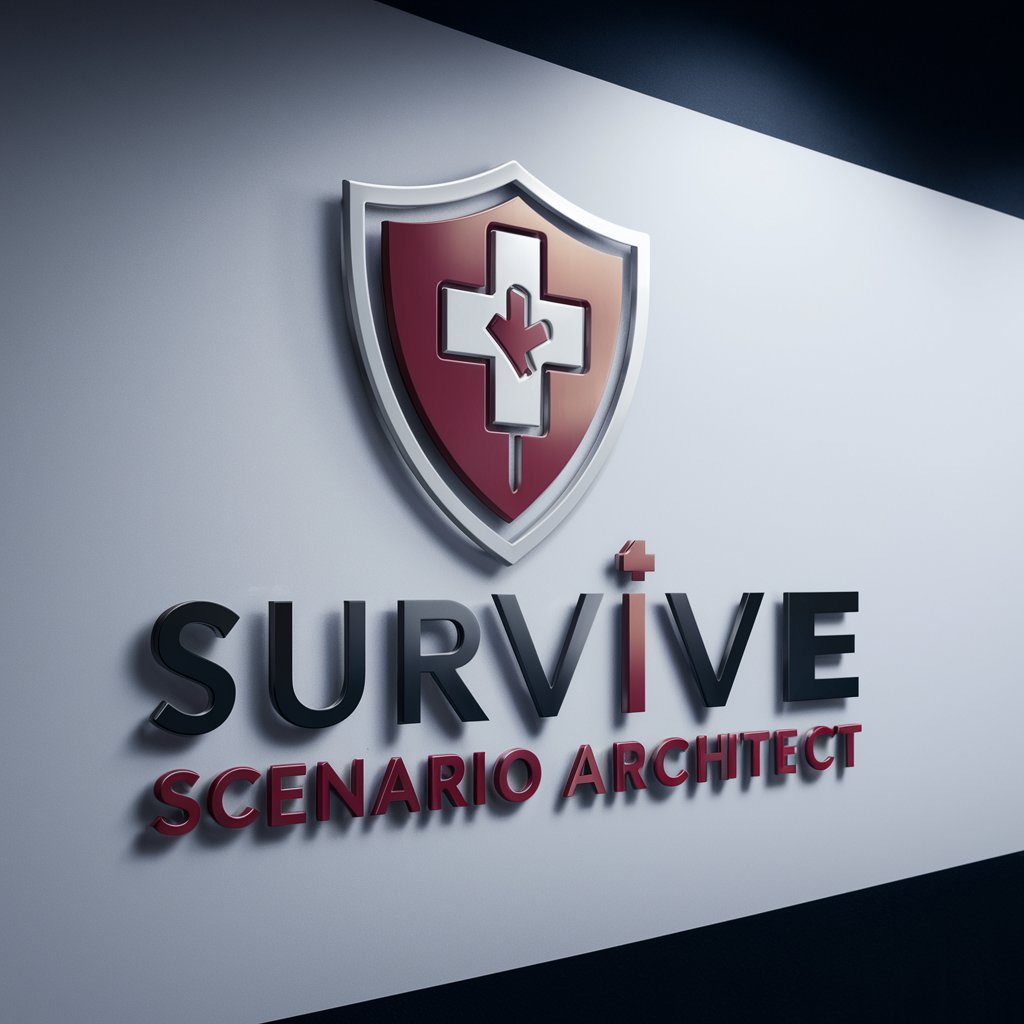Survive Scenario Architect - Emergency Scenario Simulation

Welcome! Ready to dive into emergency scenario training?
Crafting realistic emergency training with AI
Create a scenario where a natural disaster strikes a populated area, requiring participants to coordinate emergency responses.
Design a training exercise focusing on a multi-vehicle accident on a busy highway, highlighting medical and logistical challenges.
Develop a narrative where a cyberattack cripples a city's infrastructure, testing participants' crisis management and problem-solving skills.
Construct a scenario involving a public health emergency, such as a pandemic outbreak, and detail the necessary steps for containment and public safety.
Get Embed Code
Overview of Survive Scenario Architect
Survive Scenario Architect is a specialized tool designed to create immersive, interactive training scenarios for emergency situation simulations. Its core purpose is to develop realistic narratives that require quick, informed decision-making, enhancing the skills necessary for effective crisis management. The tool is built to serve public safety officials, emergency medical teams, and crisis management personnel by providing scenarios that mimic real-world emergencies, ranging from natural disasters to medical emergencies and security breaches. For example, a scenario might simulate a sudden wildfire encroaching on a populated area, requiring trainees to coordinate evacuation routes, manage public communications, and allocate resources effectively. Powered by ChatGPT-4o。

Key Functions of Survive Scenario Architect
Interactive Scenario Development
Example
Developing a multi-branch scenario where participants must respond to a severe flooding event in an urban area.
Scenario
Trainees decide on evacuation orders, deployment of rescue teams, and set up of temporary shelters. Decisions influence subsequent conditions, such as public safety, resource availability, and team morale.
Decision Impact Analysis
Example
Analysis of decisions in a hospital emergency room during a mass casualty incident.
Scenario
Participants prioritize patient care under resource constraints, affecting patient outcomes and hospital efficiency. Feedback is provided on decision impacts, enhancing learning.
Real-Time Adaptation
Example
Adjusting a scenario in real-time based on participant responses, such as during a terrorist threat simulation.
Scenario
As decisions are made about law enforcement deployment and public communication, the scenario evolves to reflect the effectiveness of these actions, increasing or decreasing the threat level dynamically.
Target User Groups for Survive Scenario Architect
Emergency Response Teams
These teams benefit from scenarios simulating natural disasters, medical emergencies, or terror attacks, which help them improve coordination, rapid response, and critical thinking in chaotic environments.
Public Safety Educators
Educators use these tools to teach students about the complexities of emergency response, preparing them through practical, scenario-based learning rather than theoretical knowledge alone.
Government Agencies
Agencies responsible for disaster management and public safety training utilize these scenarios to test and refine protocols, ensuring readiness and effective response strategies in real crises.

Guidelines for Using Survive Scenario Architect
Start Free Trial
Access the platform through yeschat.ai for a no-cost trial, no login or ChatGPT Plus subscription required.
Define Objectives
Clarify your training goals and the emergency scenarios you wish to simulate, whether for public safety, medical emergencies, or crisis management.
Customize Scenario
Utilize the platform to design your scenario, selecting variables such as scenario type, difficulty, and specific challenges to incorporate.
Run Simulations
Deploy the scenarios in training sessions, allowing participants to navigate through the decision-making paths and experience the consequences of their choices.
Review and Adjust
Analyze outcomes and feedback to refine scenarios, ensuring they meet your training objectives and enhance learning effectiveness.
Try other advanced and practical GPTs
Pathfinder 2E Lore Weaver
Crafting immersive Pathfinder adventures with AI.

Web Browser Pro
AI-powered tool for real-time research

Browser
Unlock website insights with AI-powered crawling.

Food and Beverage Serving Workers Assistant
Empowering Servers with AI Insight

Český etymologický slovník
Unveil the Roots of Czech Words with AI

Romani Roots
Explore Romani Heritage with AI

Yarpen's Harrowing Tales
Unleash Your Adventure with AI

Pesticide Counselor
AI-driven pest control expertise

Chalkidiki Agronomist
Cultivating success with AI wisdom

Ayman Pharaoh Guide
Your AI-powered window into Egypt

Julia Programming Expert
AI-powered expert for Julia programming.

Cinema Sage
Deep Dive into Cinema with AI

Frequently Asked Questions about Survive Scenario Architect
What types of training can Survive Scenario Architect be used for?
It's ideal for a wide range of emergency preparedness training, including public safety, emergency medical care, disaster response, and crisis management. The tool's flexibility allows for the creation of scenarios tailored to specific objectives and target audiences.
How does Survive Scenario Architect enhance learning?
By simulating real-world emergencies that require quick, informed decisions, it enhances participants' decision-making skills, situational awareness, and ability to respond under pressure, providing an immersive and engaging learning experience.
Can scenarios be customized for different skill levels?
Absolutely. The platform allows for the adjustment of scenario complexity and challenge, making it suitable for a wide range of skill levels, from beginners to advanced practitioners.
How does feedback work in scenario simulations?
Participants receive immediate feedback on their decisions, with detailed explanations of the consequences. This helps to reinforce learning and highlight areas for improvement.
Is Survive Scenario Architect suitable for team training?
Yes, it's designed to support both individual and team training exercises. Scenarios can be crafted to encourage teamwork, communication, and collaborative problem-solving.
